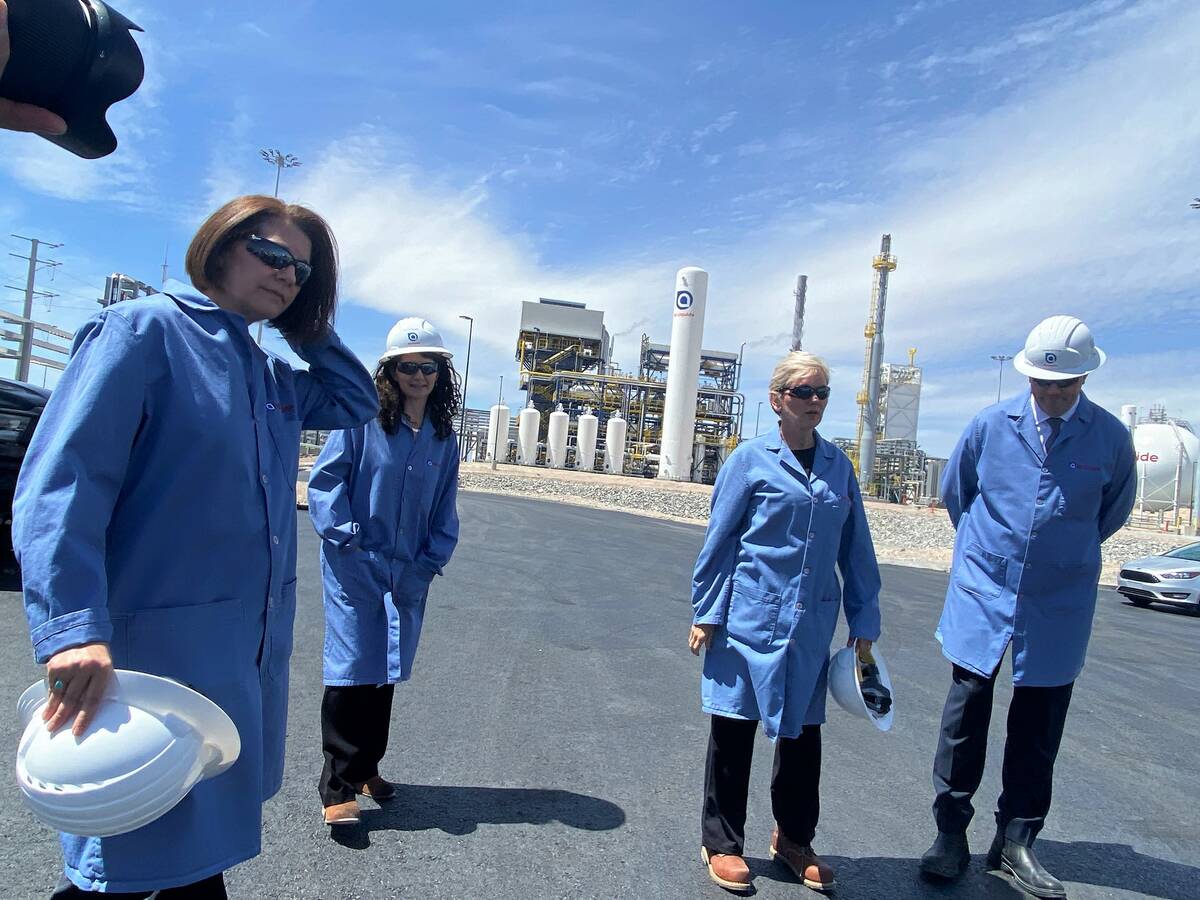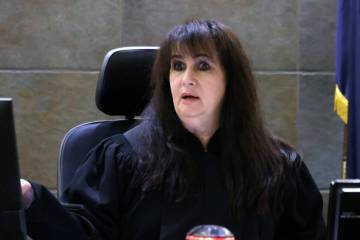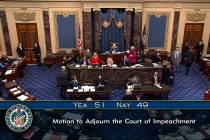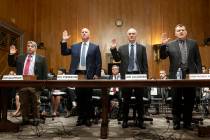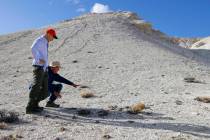Granholm, Lee, Cortez Masto tout Nevada’s role in clean energy
U.S. Energy Secretary Jennifer Granholm on Friday highlighted clean energy initiatives and decarbonization efforts while on a swing through Southern Nevada.
Granholm was in the Silver State with members of Nevada’s federal delegation for a trio of energy-focused tours that included the NV Energy Beltway Center Complex to highlight energy grid modernization, a tour of a weatherized home in Spring Valley and a look at the under-construction Air Liquide in North Las Vegas, a $250 million liquid hydrogen plant that is expected to open as early as this month and eventually produce enough fuel to supply 40,000 vehicles running on hydrogen fuel cells each day.
“Nevada is in the enviable position of being able to generate so much clean energy and to be an example for the rest of the country,” Granholm said.
Granholm was joined by Democratic Rep. Susie Lee for the NV Energy and weatherized home tour, and by Democratic U.S. Sen. Catherine Cortez Masto for the Air Liquide event.
Granholm said she is very interested in Nevada’s plan to move forward with a connected regional transmission system, one that would help Nevada receive energy when it needs it but also export its vast solar, wind and geothermal energy resources to other states as well.
Granholm also pointed to Nevada’s large role in the in the growth of the clean car market given the state’s prominent place in the mining and production of lithium carbonate, a primary compound in the production of batteries used in electric vehicles.
“We’ve got to have a focus as a nation on getting critical materials, critical minerals for the batteries that these electric vehicles will need,” she said “You guys have a lot of that. And so that is a huge opportunity.”
The infrastructure law, signed last fall, dedicated $7.5 billion towards electric vehicle charging stations and $3.2 billion for home weatherization. Nevada’s share of those funds is $38 million for electric vehicle charging stations and $24 million for weatherization.
“We stand literally at the epicenter of the upside of this infrastructure package,” Lee said.
Cortez Masto said the infrastructure bill provides a needed off-ramp for the state and the country as a whole to transition away from carbon-producing fossil fuels to more clean energy options.
Nevada voters in 2020 approved a constitutional amendment that requires 50 percent of the state’s energy to come from renewable resources by 2030, and the state law passed in 2019 calls for the same measures.
“That’s what the infrastructure package does. It invests in all these different types of renewable energy,” Cortez Masto said. “It actually does invest in research and development and invest in the production and assembly, along with the end of it which is the recycling.”
Projects like the Air Liquide plant will also be a substantial step towards decarbonizing Southern Nevada’s transportation sector, she added.
“Our energy portfolio should be diverse. And really our goal is to make sure that we really lean into the renewable piece of it so that we’re lowering our carbon footprint,” Cortez Masto said. “And this is a perfect example.”
Contact Colton Lochhead at clochhead@reviewjournal.com. Follow @ColtonLochhead on Twitter.




